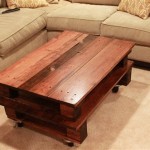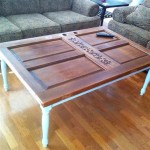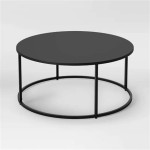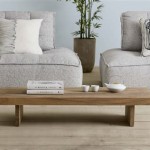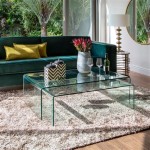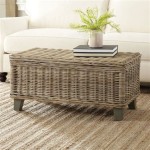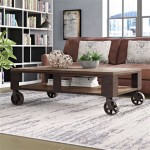How to Decorate a Coffee Table Tray: A Comprehensive Guide
Coffee table trays serve as both functional and decorative elements within a living space. They consolidate items, prevent spills from damaging the table surface, and, most importantly, offer an opportunity to express personal style and enhance the overall aesthetic of the room. Effective decoration of a coffee table tray requires careful consideration of size, shape, material, and the surrounding décor. This article outlines a detailed approach to achieving a visually appealing and practical coffee table tray arrangement.
The primary function of a coffee table tray is to provide a designated area for items commonly used in the living room. These could include remote controls, reading materials, beverages, or decorative accents. A well-decorated tray accomplishes this while simultaneously elevating the visual appeal of the coffee table itself. The arrangement should be both aesthetically pleasing and easily accessible, facilitating daily use without compromising the decorative aspect.
Selecting the Right Tray
The first step involves choosing a tray that complements the existing coffee table and the overall room design. Factors to consider include size, shape, material, and style. The size of the tray should be proportionate to the coffee table; it should not overwhelm the table but should be large enough to accommodate the desired items without appearing cluttered. Shape considerations include rectangular, square, round, and oval trays, each offering a different visual impact. Rectangular and square trays often lend themselves to more structured arrangements, while round and oval trays can soften the angularity of a square or rectangular coffee table.
Material selection is crucial for establishing the desired aesthetic. Common materials include wood, metal, glass, and acrylic. Wooden trays provide a warm, natural feel, suitable for rustic or traditional décor. Metal trays, often made of brass, silver, or stainless steel, offer a touch of elegance and sophistication, fitting well within modern or glam interiors. Glass trays, sometimes mirrored, create a sense of openness and can add a touch of glamour. Acrylic trays provide a contemporary and minimalist look, blending seamlessly with modern decor.
The style of the tray should also align with the overall design theme of the room. A rustic farmhouse might feature a wooden tray with distressed finishes, while a modern minimalist space may benefit from a sleek metal or acrylic tray. The tray itself serves as the foundation for the entire arrangement, and its aesthetic qualities will influence the choice of decorative elements placed within it.
Before purchasing a tray, it is advisable to measure the coffee table surface to ensure ample space for the tray and surrounding items. A tray that is too large will dominate the table, while a tray that is too small will appear insignificant. A well-proportioned tray enhances the visual balance of the room.
Curating Decorative Elements
Once the tray is selected, the next step involves curating the decorative elements that will be placed within it. The key is to create a balanced and visually interesting arrangement that reflects personal style and complements the room's overall aesthetic. A common approach involves incorporating items of varying heights, textures, and colors to add depth and visual interest.
Books are a versatile and practical addition to a coffee table tray. A stack of aesthetically pleasing books can serve as a base for other decorative items, adding height and visual weight to the arrangement. Choose books that reflect personal interests or complement the room's color palette. Coffee table books with intriguing covers are particularly effective.
Candles and candle holders provide an opportunity to add warmth and ambiance. A scented candle can infuse the room with a pleasant fragrance, while a decorative candle holder can add visual interest. Opt for different sizes and shapes of candles to create a dynamic arrangement. Consider using a mix of pillar candles, votive candles, and tealight candles.
Greenery, whether real or artificial, adds a touch of freshness and life to the coffee table tray. A small potted plant, a succulent, or a vase with fresh flowers can brighten up the space and introduce a natural element. For low-maintenance options, consider using high-quality artificial plants that look realistic. Greenery can also soften the hard lines of other decorative objects, creating a more inviting arrangement.
Decorative objects, such as sculptures, figurines, or unique trinkets, can reflect personal interests and add character to the coffee table tray. Choose items that are meaningful or visually appealing. Grouping objects in odd numbers, such as three or five, often creates a more visually pleasing arrangement. Consider the size and scale of the objects in relation to the tray and the surrounding décor.
Coasters are essential for protecting the coffee table surface from spills and stains. Choose coasters that complement the overall aesthetic of the tray and the room. Coasters can be made of various materials, including wood, stone, metal, and ceramic. Decorative coasters can also serve as an accent piece within the tray.
Other potential items include small bowls or dishes for holding keys or other small objects, decorative boxes for storing remote controls or other items, and magnifying glasses for adding a touch of intellectual curiosity. The key is to select items that are both functional and visually appealing, contributing to the overall aesthetic of the coffee table tray.
Arranging for Visual Harmony
The final step involves arranging the decorative elements within the tray to create a visually harmonious composition. This requires careful consideration of balance, scale, color, and texture. The goal is to create an arrangement that is both aesthetically pleasing and functional, enhancing the overall appeal of the living space.
Start by establishing a focal point within the tray. This could be a taller object, such as a vase with flowers or a stack of books, that draws the eye and anchors the arrangement. Place the focal point slightly off-center to create a more dynamic composition. Avoid placing the focal point directly in the center of the tray, as this can create a static and uninteresting arrangement.
Arrange the remaining items around the focal point, considering their size and scale in relation to each other. Vary the heights of the objects to create visual interest. A common technique involves layering objects, placing taller items towards the back of the tray and shorter items towards the front. This creates depth and prevents the arrangement from appearing flat.
Pay attention to the balance of the arrangement. Distribute the weight of the objects evenly throughout the tray to create a sense of stability. Avoid placing all the heavy objects on one side of the tray, as this can create an unbalanced and visually jarring arrangement. Consider using the principle of visual triangle, where three objects of varying heights are arranged in a triangular shape to create a balanced and visually pleasing composition.
Consider the color palette of the room and the tray itself when selecting decorative elements. Choose items that complement the existing color scheme. Use color to create visual interest and to tie the arrangement together. You can choose to use a monochromatic color scheme, where all the items are in different shades of the same color, or a complementary color scheme, where you use colors that are opposite each other on the color wheel. You can also use pops of color to add visual interest to a neutral arrangement.
Experiment with different textures to add depth and visual interest to the coffee table tray. Combine items with smooth and rough textures, or items with matte and glossy finishes. This will create a more dynamic and engaging arrangement. For example, you could combine a smooth glass vase with a rough wooden tray, or a matte ceramic bowl with a glossy metal candle holder.
Finally, ensure that the arrangement is both aesthetically pleasing and functional. Consider how you will use the items in the tray on a daily basis. Make sure that the items are easily accessible and that they do not obstruct your view of the television or other parts of the room. The coffee table tray should enhance the overall functionality of the living space, not detract from it.
Regularly reassess and adjust the arrangement of the coffee table tray to keep it fresh and interesting. Swap out items seasonally, or as your personal style evolves. The coffee table tray is a dynamic element that can be used to express your creativity and enhance the overall aesthetic of your home.

How To Decorate A Coffee Table Like Pro Stonegable

How To Style Decorate A Coffee Table With Tray Shabbyfufu Com

How To Decorate A Coffee Table Like Pro Stonegable

How To Decorate A Coffee Table Like Pro Stonegable

How To Style Decorate A Coffee Table With Tray Shabbyfufu Com

How To Style Decorate A Coffee Table With Tray Shabbyfufu Com

How To Style Coffee Table Trays Ideas Inspiration

Ten Tips On Decorating Your Coffee Table Through My Front Porch

The Basics Of Coffee Table Styling Shades Blue Interiors

Ten Tips On Decorating Your Coffee Table Through My Front Porch
Related Posts

